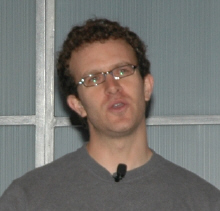The idea of less as a competitive advantage


According to Fried, in the era of lightweight apps and simple products you need less money, people, time, abstractions and software.
Fried believes that money mostly buys salaries and you only need three people--a designer, programmer and utility player, which he calls a "sweeper." The feature set should be scaled for the headcount. Having less time is also an advantage. "You spend time in unproductive meetings and overanalyzing the product. Less time forces you to spend less time on better things," Fried said.
He suggested 30 hours per week per person, which "forces you into building better products and being creative with your time." And, if you have less time, you have less time to think about abstractions, such as functional specification documents, which Fried characterized as a waste of time. "Instead, build the product and start from the user interface customer experience first; then wrap with the technology," Fried said. "The interface screens are the functional specification."
Finally, building less software means fewer features, less documentation, minimal support and less confusion in selling the product. "Less software is key to building very specific tools. There are a million simple problems to solve with less. Competitors solving complicated ones are most likely to fail," Fried said. "For Web-based software there are plenty of simple problems to pick from and you can nail."
So far, Fried has shown that the basic less is more model (although he probably puts in at least 60 hours a week) is working with his set of subscription-based products, but just wait until users or customers start requesting more features, faster time to market and competiton peaks. Small and nimble teams, and software, right-sized for the Web, can be highly efficient, but having the discipline to stay that way is really hard...
Photo Gallery: Web 2.0 Conference 2005